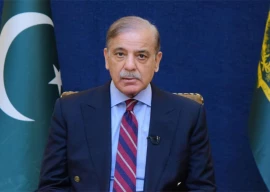
The economy has stabilised to some extent with the stabilisation measures initiated in May 2022. The policy rate, which was jacked up to 22%, has come down to 19.5% in a recent monetary policy announcement.
Similarly, the fiscal deficit decreased to 6.8% in fiscal year 2023-24 by cutting down development expenditure to 2% of GDP. These measures increased the foreign exchange reserves to around $14 billion while the average inflation rate dropped to 23.4% in FY24.
The stabilisation measures are gradually taking root. There is anticipation that the inflation rate will drop quickly in FY25. The nominal exchange rate has been hovering around Rs280 to a dollar and the real effective exchange rate has appreciated to some extent. The appreciation of the real effective exchange rate will affect the competitiveness of exports as the country is trying to orient towards an export-led economic growth.
The appreciation of exchange rate will make exports expensive and imports cheaper. Cheap imports provide opportunities to the middle class to buy more.
The middle class loosens its purse strings for imported goods and brands. As they prefer to buy imported goods, the pace of buying will increase. Other consumers will react positively to the slowdown in inflation.
On the contrary, exports will become expensive as domestic producers grapple with the increasing cost and their exports will decrease. As a consequence, the growth of imports will outpace the growth of exports which, in turn, deteriorates the trade balance.
The stabilisation of the rupee-dollar exchange rate has started to attract portfolio investment in treasury bills. A marked difference in the policy rates of Pakistan and advanced countries has made treasury bills attractive for foreign portfolio investors.
This capital inflow has provided cushion to the State Bank of Pakistan (SBP) to allow the repatriation of profits in the form of dividends, which had been held up since 2022. If the capital inflow is greater than the outflow, it will further appreciate the real exchange rate, provided the SBP does not intervene in the foreign exchange market.
On the other hand, the SBP intervenes in the foreign exchange market to arrest the appreciation of the rupee and buy dollars. This will increase the supply of money as the SBP uses rupees to buy dollars. Since there is an excess supply of money, the SBP will sell government bonds to banks to mop up the excess money. This operation is known as sterilisation.
The sterilisation will decrease the profit of the SBP, which ultimately counts as the non-tax revenue. Hence, the non-tax revenue of the government will fall and it may increase the fiscal deficit.
This shows that there is a clash between the foreign exchange rate stability and the domestic inflation rate. The SBP has to strike a delicate balance between the two through a mix of policies.
In simple words, if the SBP buys dollars from the market, it will increase the money supply. If it adopts a policy of inaction, this will increase the inflation rate.
To keep inflation in check, it has to drain excess rupee from the market. Hence, this operation entails a cost, which aggravates the fiscal deficit. If inflation drops quickly, it will increase the real interest rate. Normally, central banks gradually reduce the policy rate. The rise in real interest rate will increase the financing cost of investment, which will further deter domestic investors.
In a nutshell, financial globalisation and macro stabilisation measures have reduced the policy space for the government a great deal. The stabilisation measures quickly reduce the inflation rate, which increases the real exchange rate and real investment rate. Hence, consumption increases, domestic investment decreases and exports falter. Based on this, a homegrown stabilisation plan is the need of the hour.
The writer is an independent economist who worked at SDSB, Lahore University of Management Sciences (LUMS)




1719211536-0/BeFunky-collage-(81)1719211536-0-165x106.webp)



















COMMENTS
Comments are moderated and generally will be posted if they are on-topic and not abusive.
For more information, please see our Comments FAQ